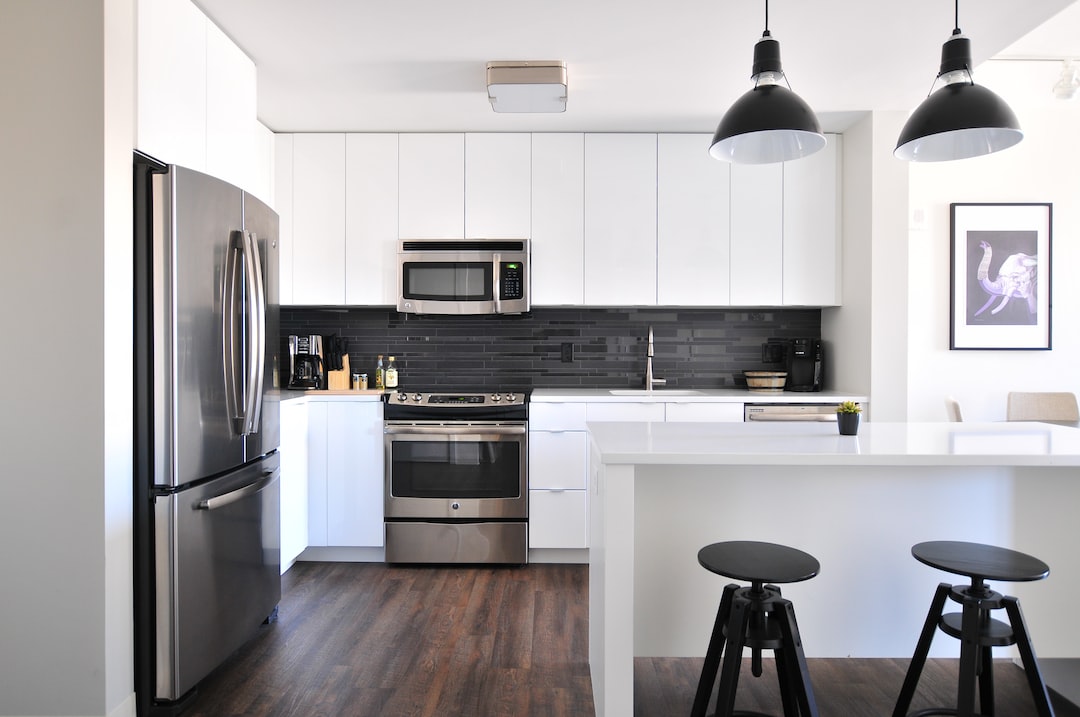Introduction
Home improvement projects are an essential part of maintaining and enhancing the value of your home. Whether you are looking to sell your property or simply want to create a more comfortable and functional living space, home improvement projects can make a significant difference. However, before embarking on any project, it is important to consider various factors such as assessing your needs, setting a budget, choosing the right projects, focusing on safety and security, upgrading energy efficiency, improving curb appeal, updating kitchens and bathrooms, maximizing living space, addressing structural issues, and planning for the future.
Assessing Your Home Improvement Needs: Where to Start?
Assessing your home improvement needs is the first step in any project. It involves evaluating the current condition of your home and identifying areas that require improvement. This assessment will help you prioritize your projects and allocate your resources effectively.
Start by taking a walk around your home and making a list of areas that need attention. Look for signs of wear and tear, such as peeling paint, cracked tiles, or leaky faucets. Consider the functionality of each room and whether it meets your needs. For example, if you have a growing family, you may need to create additional living space or add a bedroom. Take note of any safety hazards or security concerns that need to be addressed.
Setting a Budget: How Much Can You Afford to Spend?
Setting a budget is crucial to ensure that your home improvement project remains within your financial means. It is important to be realistic about how much you can afford to spend and to allocate your budget accordingly.
Start by determining how much money you have available for the project. Consider your savings, any loans or financing options, and any additional income you can allocate towards the project. Once you have a clear understanding of your budget, prioritize your projects based on their importance and allocate funds accordingly. It is also important to set aside a contingency fund for unexpected expenses that may arise during the project.
Choosing the Right Projects: Which Ones Will Add Value to Your Home?
Choosing the right projects is essential to ensure that your home improvement efforts add value to your property. Not all projects will have the same impact on the value of your home, so it is important to prioritize those that will provide the greatest return on investment.
Consider factors such as the current market trends, the needs of potential buyers, and the condition of your home. Projects that improve the functionality and aesthetics of your home, such as kitchen and bathroom renovations, are generally considered to have a high return on investment. Additionally, projects that improve energy efficiency, such as installing solar panels or upgrading insulation, can also add value to your home.
Focusing on Safety and Security: Why They Should Be Your Top Priority
Safety and security should always be a top priority when undertaking any home improvement project. Ensuring that your home is safe and secure not only protects your family but also adds value to your property.
Start by addressing any safety hazards, such as loose handrails, faulty electrical wiring, or slippery floors. Install smoke detectors and carbon monoxide detectors in appropriate areas of your home. Consider installing a security system or upgrading your existing system to provide added protection against burglaries and break-ins.
Upgrading Your Home’s Energy Efficiency: How It Can Save You Money
Upgrading your home’s energy efficiency is not only good for the environment but can also save you money in the long run. Energy-efficient homes require less energy to heat and cool, resulting in lower utility bills.
Start by assessing the energy efficiency of your home. Consider upgrading insulation, sealing air leaks, and installing energy-efficient windows and doors. Replace old appliances with energy-efficient models and consider installing solar panels to generate your own electricity. These upgrades will not only save you money but also make your home more attractive to potential buyers.
Improving Your Home’s Curb Appeal: Why It Matters
Improving your home’s curb appeal is essential to create a positive first impression and increase the value of your property. The exterior of your home is the first thing potential buyers or visitors see, so it is important to make it as attractive as possible.
Start by cleaning and decluttering the exterior of your home. Trim overgrown bushes and trees, mow the lawn, and plant flowers or shrubs to add color and interest. Consider repainting the exterior or updating the front door to create a fresh and inviting look. Adding outdoor lighting can also enhance the curb appeal of your home.
Updating Your Kitchen and Bathrooms: Which Improvements Will Have the Biggest Impact?
Updating your kitchen and bathrooms can have a significant impact on the value and functionality of your home. These are the most frequently used areas of the house and are often the first rooms potential buyers look at.
Start by assessing the condition of your kitchen and bathrooms. Consider updating outdated fixtures, replacing worn-out countertops, and installing new appliances. Adding storage solutions, such as cabinets or shelves, can also improve the functionality of these rooms. Consider modernizing the design and adding features that are popular with buyers, such as a kitchen island or a walk-in shower.
Maximizing Your Living Space: How to Make the Most of Every Room
Maximizing your living space is essential to create a comfortable and functional home. Whether you have a small apartment or a large house, making the most of every room can significantly improve your quality of life.
Start by decluttering and organizing each room. Remove any unnecessary furniture or items that take up valuable space. Consider adding storage solutions, such as built-in shelves or under-bed storage, to maximize the available space. Use light colors and mirrors to create the illusion of a larger space. Consider multi-functional furniture, such as a sofa bed or a coffee table with storage, to make the most of limited space.
Addressing Structural Issues: Why They Shouldn’t Be Ignored
Addressing structural issues in your home is crucial to ensure its safety and longevity. Ignoring structural issues can lead to further damage and costly repairs down the line.
Start by identifying any signs of structural issues, such as cracks in the walls or foundation, sagging floors, or water damage. Consult with a professional contractor or engineer to assess the severity of the problem and determine the best course of action. Addressing structural issues may involve repairing or replacing damaged components, reinforcing the structure, or waterproofing the foundation.
Planning for the Future: Which Improvements Will Help You Age in Place?
Planning for the future is important, especially if you plan to stay in your home as you age. Making improvements that will help you age in place can ensure that your home remains safe and comfortable as you get older.
Start by considering your future needs and limitations. Install grab bars and handrails in bathrooms and stairways to prevent falls. Consider widening doorways and hallways to accommodate mobility aids, such as wheelchairs or walkers. Install non-slip flooring and remove any tripping hazards. Consider adding a bedroom and bathroom on the main level to avoid having to navigate stairs.
Conclusion
Home improvement projects are an important investment in your property and your quality of life. By assessing your needs, setting a budget, choosing the right projects, focusing on safety and security, upgrading energy efficiency, improving curb appeal, updating kitchens and bathrooms, maximizing living space, addressing structural issues, and planning for the future, you can create a home that is not only beautiful but also functional and safe. So, don’t wait any longer – start your own home improvement project today and enjoy the benefits for years to come.
If you’re wondering which home improvements should be done first, check out this article on “6 Signs You Need New Windows” from Comely Style. It provides valuable insights on how to determine if your windows need replacing and why it should be a priority. With tips and advice on identifying signs of window deterioration, this article will help you make informed decisions about your home improvement projects. Read more





